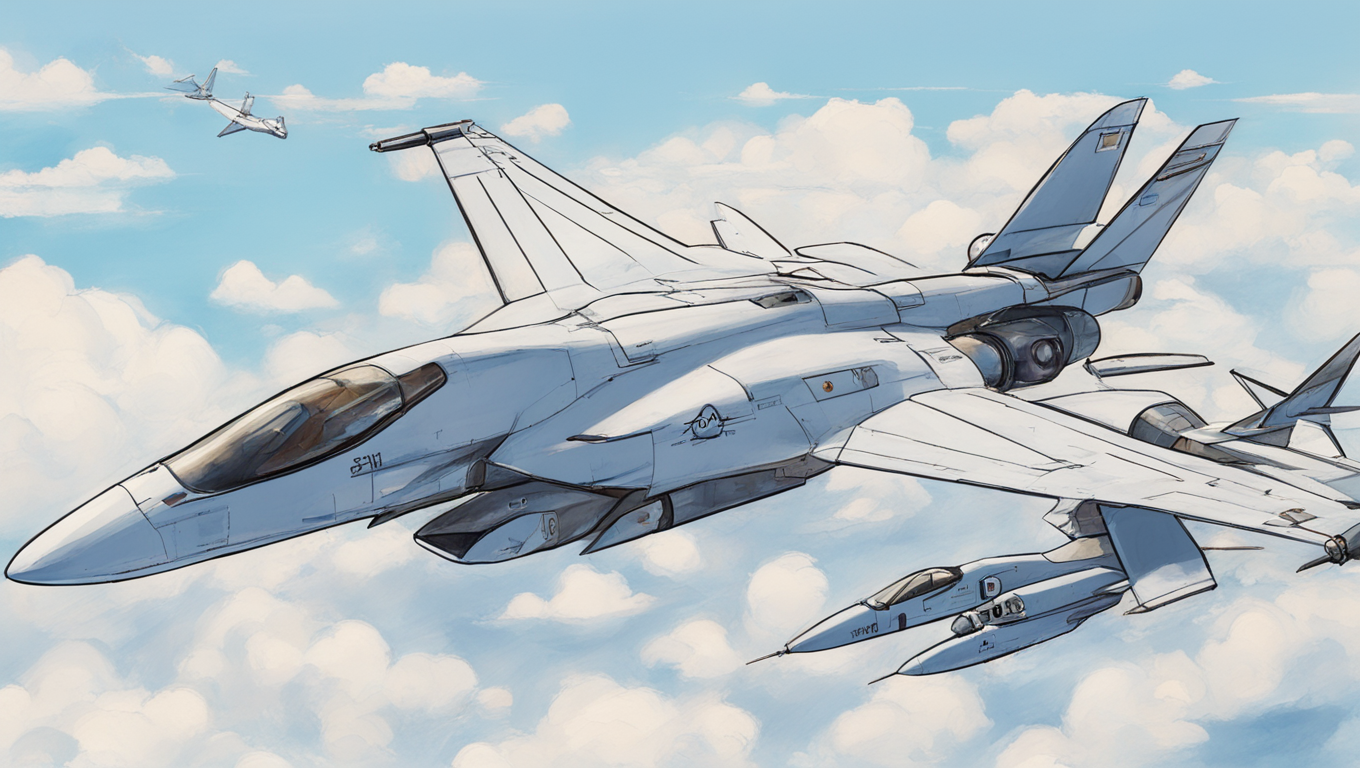In a groundbreaking move, Japan and the United States have joined forces to embark on a new research endeavor focused on artificial intelligence (AI) for drones. The ultimate goal of this partnership is to develop advanced unmanned air vehicles that can work in tandem with Japan’s next-generation fighter jet. Japan has plans to co-develop its new fighter aircraft with Britain and Italy by 2035. While the United States is not directly involved in the fighter jet project, it is keen on strengthening defense cooperation with Tokyo, particularly in the area of autonomous systems capabilities.
The joint AI study aims to revolutionize airborne combat by integrating cutting-edge AI and machine learning with state-of-the-art unmanned air vehicles (UAVs). In a press release issued by the U.S. Air Force, it was stated that the AI technology developed through this collaboration will be applied to UAVs that will operate alongside Japan’s future fighter aircraft. This partnership is seen as an opportunity to maintain the technological advantages of the Japan-U.S. alliance.
The drones developed as a result of this research will have the capability to collect valuable data by flying in close proximity to fighter jets. This data can provide crucial insights and enhance the effectiveness of airborne combat operations.
This collaboration comes as part of a three-way fighter jet development deal that Japan struck with the United States, Britain, and Italy in December 2022. The United States has expressed its support for Japan’s defense cooperation with the two NATO members as Japan confronts an increasingly assertive China and a challenging security environment. Initially, Japan sought to collaborate exclusively with U.S. defense firms to develop its new fighters. However, due to the strict U.S. rules on information confidentiality, Japan decided to seek out other partners. The aim is to develop a successor to Japan’s F-2 planes, while Britain and Italy plan to replace their aging Eurofighter jets. This fighter jet program marks Japan’s first-ever joint defense equipment development deal with a country other than the United States.
This groundbreaking collaboration between Japan and the United States signifies a significant step forward in the realm of military drones and highlights the growing importance of AI in the field of aerial combat. By harnessing the power of AI, these autonomous systems have the potential to greatly enhance the effectiveness and capabilities of both reconnaissance and combat operations.
As we move further into the era of advanced technology, it is clear that AI will play a pivotal role in shaping the future of warfare. The partnership between Japan and the United States exemplifies the recognition of this fact and the commitment of these two nations to maintain their technological superiority in the face of evolving security challenges.
In the words of the U.S. Air Force, this collaboration aims to “revolutionize airborne combat” by fusing together the latest advancements in AI and machine learning with cutting-edge drone technology. By combining the strengths and expertise of Japan and the United States, this joint research effort has the potential to push the boundaries of what is possible in the world of aerial warfare.
The integration of AI into drones opens up a world of possibilities. These autonomous systems have the ability to analyze and process vast amounts of data in real-time, allowing for improved decision-making and a more efficient execution of missions. Furthermore, AI-powered drones can adapt and learn from their experiences, continuously improving their performance and effectiveness.
As we delve deeper into the realm of AI-driven military technology, it is crucial to address concerns regarding ethical considerations and potential risks. The development and deployment of autonomous systems must be done responsibly, ensuring that human oversight and decision-making remain integral to the process.
The partnership between Japan and the United States sets a precedent for international collaboration and highlights the collective effort required to navigate the complex and rapidly evolving landscape of AI-driven warfare. It serves as a reminder that global challenges necessitate global solutions and that by working together, nations can push the boundaries of what is possible.
In the words of Deputy Secretary of Defense, Kathleen H. Hicks, “This agreement demonstrates the continued commitment of the United States and Japan to advance the development and application of cutting-edge technologies that support our shared security interests. By combining our strengths and expertise, we can shape the future of global security and ensure a free and open Indo-Pacific.”
Indeed, this partnership represents a significant step forward in harnessing the power of AI for airborne combat operations. As technology continues to advance and reshape the world, it is fascinating to witness the merging of human ingenuity with artificial intelligence, propelling us into a new era of warfare where the possibilities seem limitless.





Use the share button below if you liked it.